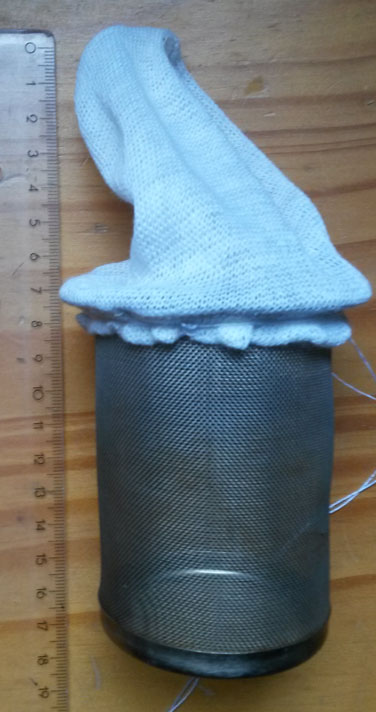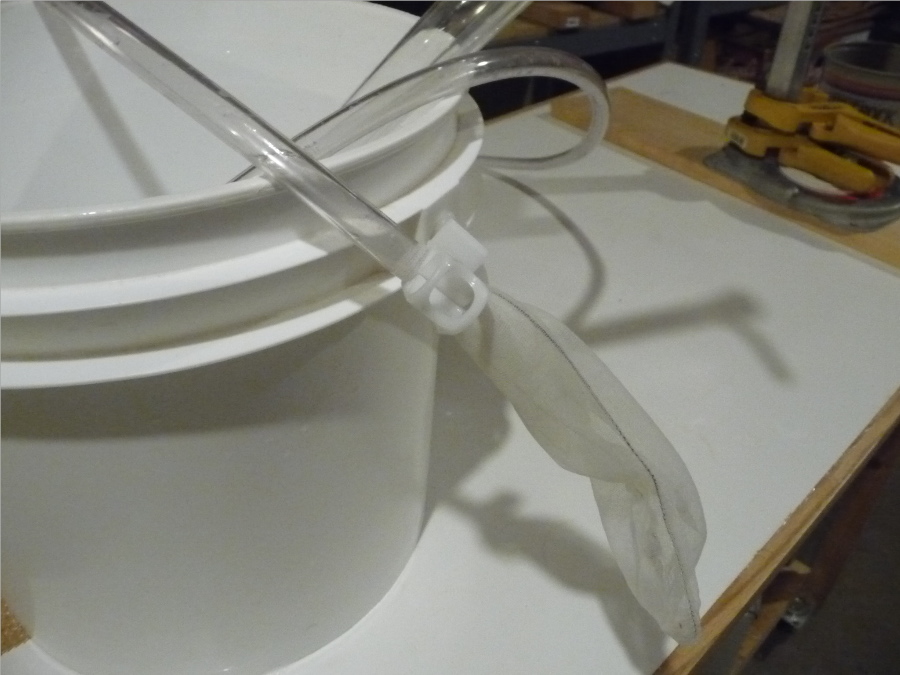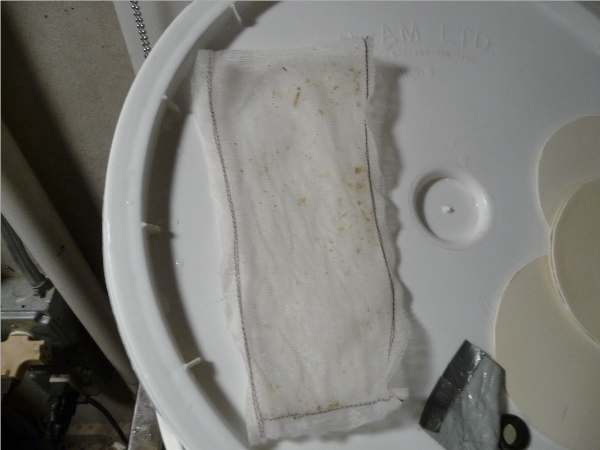I have a beer sitting in the fermenter for 4 days so far, and I'm strongly considering to dry hop with a bit of simcoe and a bunch of mandarina bavaria, I'm thinking something like 1:3 or 1:2 ratio, to really make that orange shine.
However, I forgot to order a hop bag. I know this is not too big a deal, since many people do without, but I'm not entirely sure on the process involved to keep the hops out of the bottles. I also would like to skip a secondary for fear of oxidization (My only vessels are buckets with around 5 liters of head space to the 12 liters of beer).
I have two options now: Either I dry hop without a container for the hops. In this case, I'd have to filter when racking to the bottling bucket. How would I go about that? I heard that you can wrap some filter material around the racking cane, but I was unclear on whether the material should go to the inlet of the cane, or the outlet of the tube.
Another option is this little contraption here: <see attachment>. The cloth is a tea sock (which I would also use for the racking cane as described above), the metal mesh cup is a tea strainer as well. The scale is in centimeters, so it's around 6 and a half inches in length. It's rather small for a hop container I think, and the mesh might be too coarse anyways.
What do you think of my options? How much hops would you use for a 12 liter (roughly 3 gallon) batch, if my goal is not exactly to blast your nostrils with hops but achieve a noticeable aroma? I was thinking of around 40 grams total, that's about 1.5 oz. Does that sound reasonable?
(Perhaps I should mention that I used 10g of simcoe and 30g of mb at whirlpool too)

However, I forgot to order a hop bag. I know this is not too big a deal, since many people do without, but I'm not entirely sure on the process involved to keep the hops out of the bottles. I also would like to skip a secondary for fear of oxidization (My only vessels are buckets with around 5 liters of head space to the 12 liters of beer).
I have two options now: Either I dry hop without a container for the hops. In this case, I'd have to filter when racking to the bottling bucket. How would I go about that? I heard that you can wrap some filter material around the racking cane, but I was unclear on whether the material should go to the inlet of the cane, or the outlet of the tube.
Another option is this little contraption here: <see attachment>. The cloth is a tea sock (which I would also use for the racking cane as described above), the metal mesh cup is a tea strainer as well. The scale is in centimeters, so it's around 6 and a half inches in length. It's rather small for a hop container I think, and the mesh might be too coarse anyways.
What do you think of my options? How much hops would you use for a 12 liter (roughly 3 gallon) batch, if my goal is not exactly to blast your nostrils with hops but achieve a noticeable aroma? I was thinking of around 40 grams total, that's about 1.5 oz. Does that sound reasonable?
(Perhaps I should mention that I used 10g of simcoe and 30g of mb at whirlpool too)





